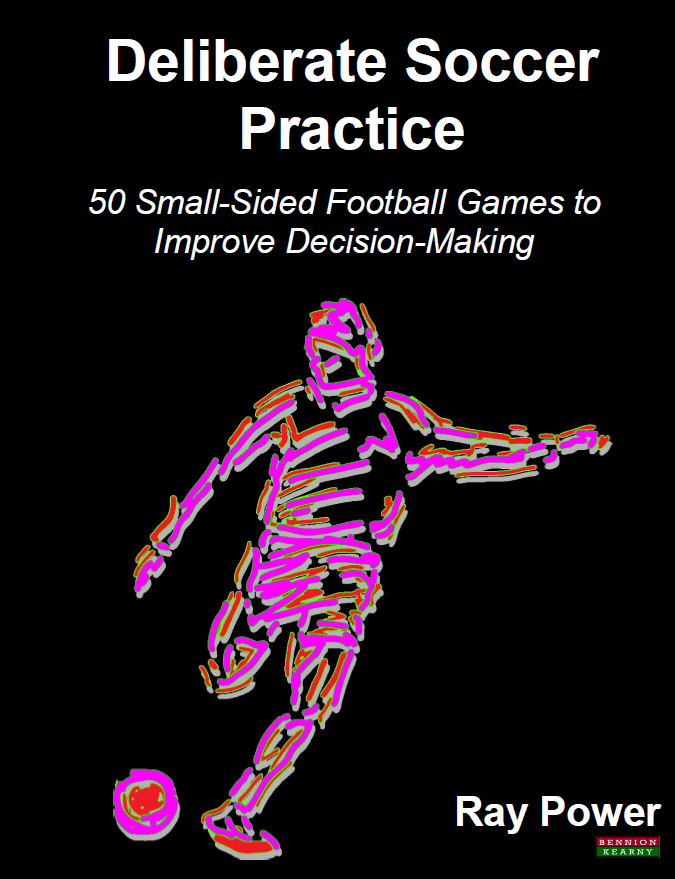
15: Set to Shoot
RELATION TO GAME:
Around 80% of goals come from finishes that are one or two touch. Many of these require a ‘set’ pass from the player making the assist. A ‘set’ allows the shooter to shoot on his first touch potentially.
INITIAL SET-UP:
- Two teams and two goals, with two goalkeepers.
- Two small boxes in each attacking third.
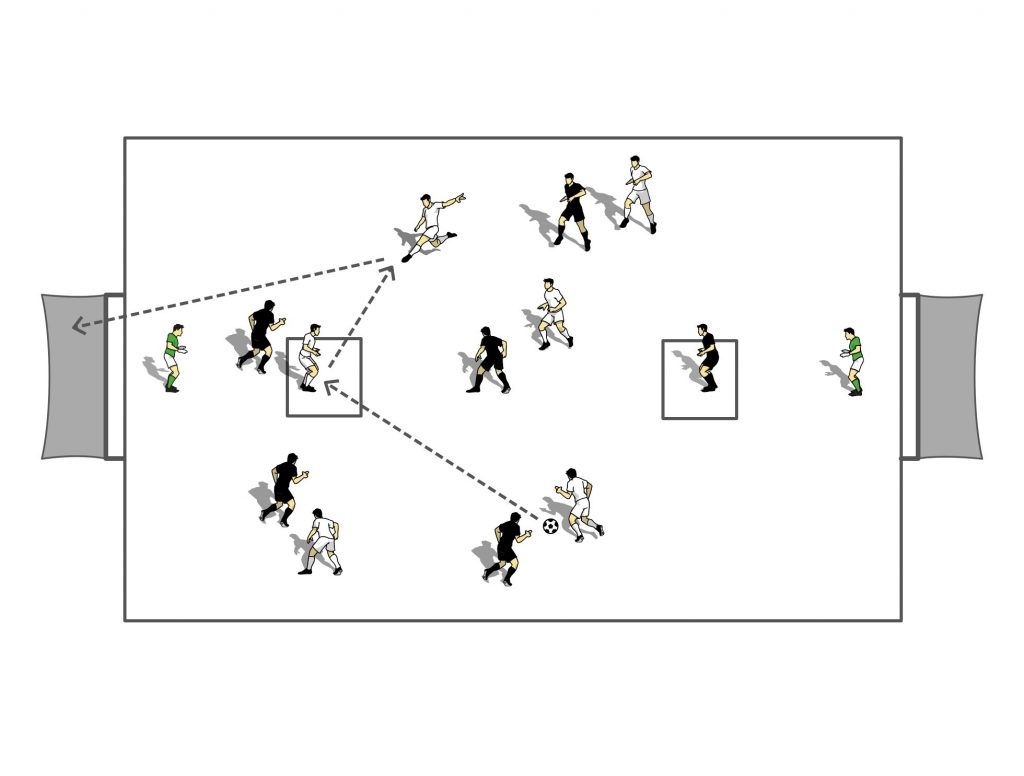
CONSTRAINT AND INSTRUCTIONS:
- One attacking ‘target’ player is confined to the small box in his attacking third.
- No other player can enter the box. Therefore the target player is unopposed.
- He is, however, confined to his small area and can only play one or two touches (depending on level and ability).
- Goals can be scored as normal throughout the game, but are worth triple if they score from a ‘set’ assist from the player in the box.
- Offside: None.
PROGRESSIONS:
- Remove the box, and replace one player from each team with a floater. This player can now be tackled, but any assist from him is worth triple points. Rotate floaters.
- Remove floaters. Goals count triple when any player makes an assist using one touch.
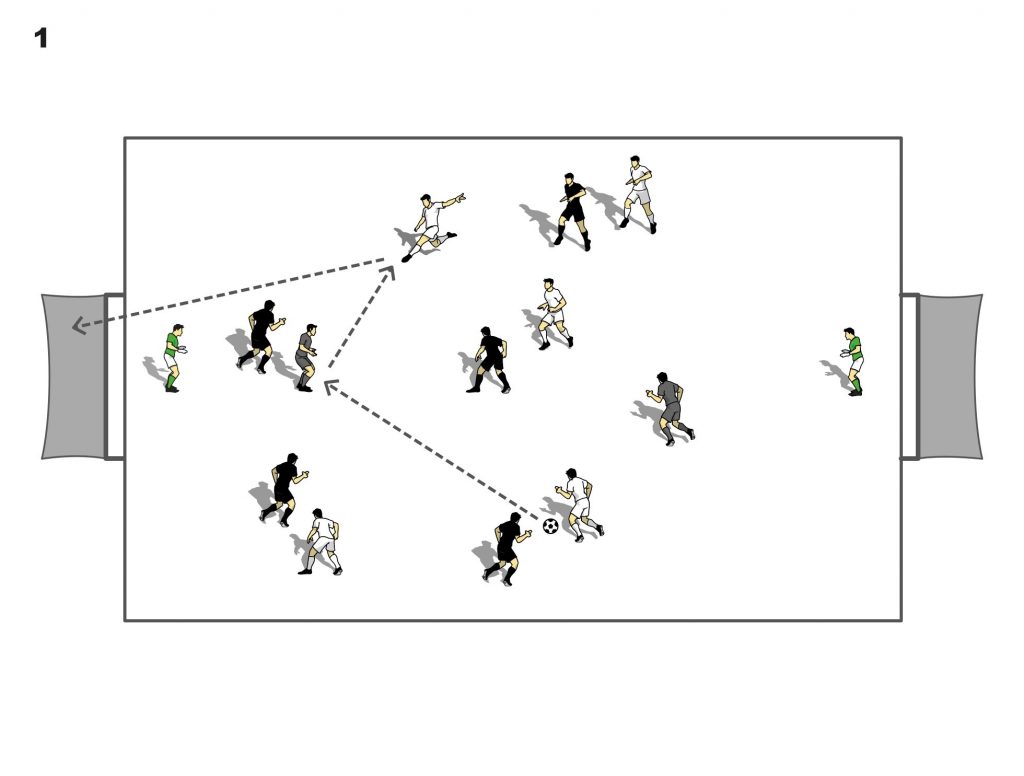
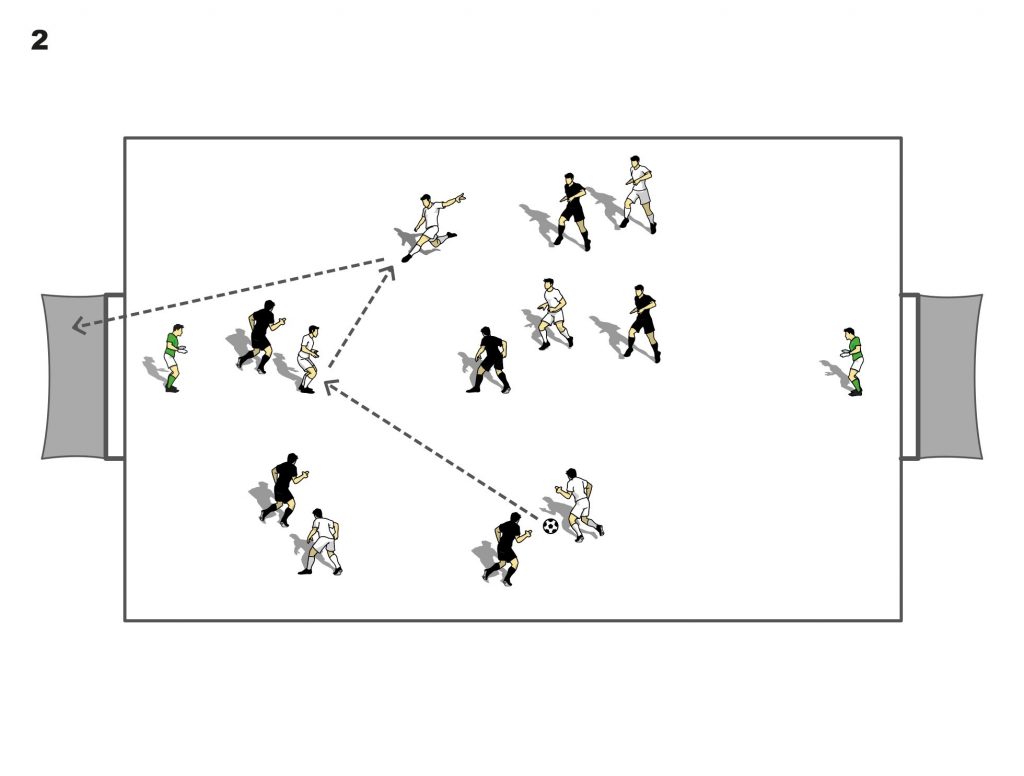
CHALLENGES / QUESTIONS FOR PLAYERS:
- Can the quality of pass into the target player be good enough to enable him to play off minimal touches?
- Can the target player scan the pitch, and the game, and constantly assess what is happening?
- Can the target player play effective ‘set’ passes for his teammates to finish?
- Can he do this whilst both unopposed and fully opposed?
- Can he play off both one and two touches (ensure you cater for the ability of your players)?
- Can the attackers finish using one touch if required?
SCORING:
Goals scored. Triple points for goals scored for a ‘set.’
CAUTION:
Ensure you cater for the ability of your players. Some may not be able to perform one-touch passes without lots of prior practice – do not ask it of them if it is not within the range of their capabilities. Make the box bigger and increase the number of touches permitted if players initially struggle.
*
24: High Defensive Pressing
RELATION TO GAME:
A majority of goals are scored as a result of regaining the ball in the opponent’s half and final third. This game encourages teams to press high and look to start attacks by regaining the ball near the opposition’s goal.
INITIAL SET-UP:
- Two teams and two goals, with two goalkeepers.
- A halfway line is in place.
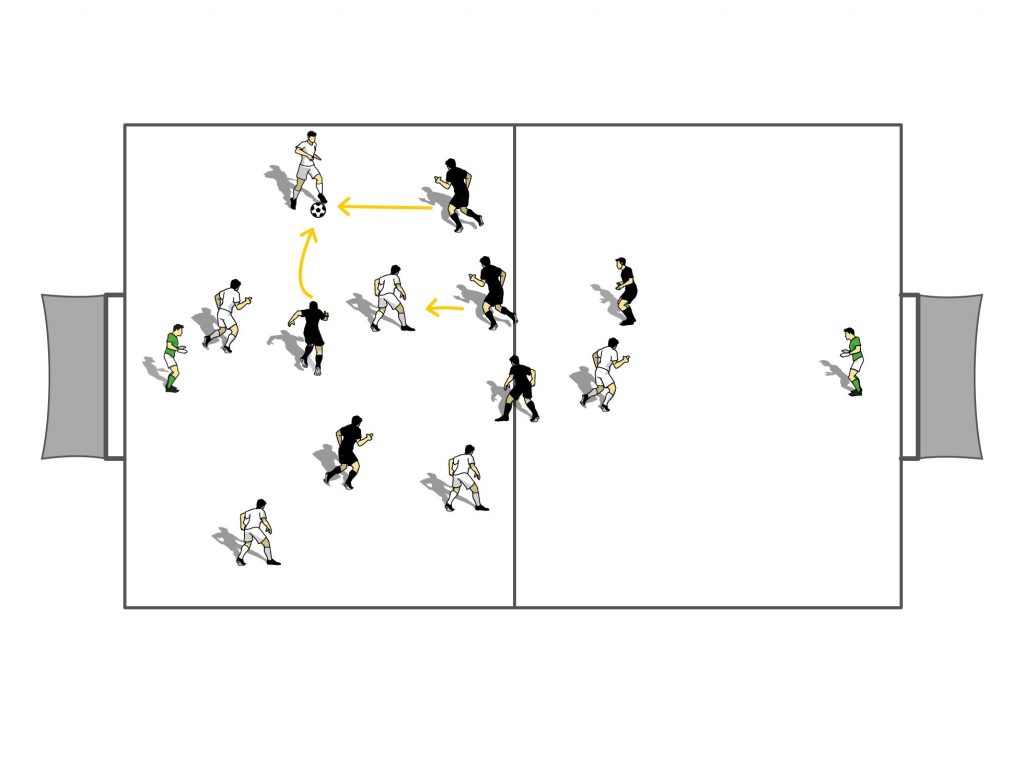
CONSTRAINT AND INSTRUCTIONS:
- Both teams receive double points if they score as a result of regaining the ball in the opposition’s half of the pitch.
- The offside line is the halfway line, allowing players to press high.
- Offside: Halfway line.
PROGRESSIONS:
- Divide the pitch into thirds. The team will now get double points when a goal is scored from a regain in the final third. The offside line can remain halfway.
- Conflicting Constraint: Add a further constraint where both teams must play through the thirds. This will encourage more opportunities to press high, and also work on your players’ abilities to play out from the back when under pressure.
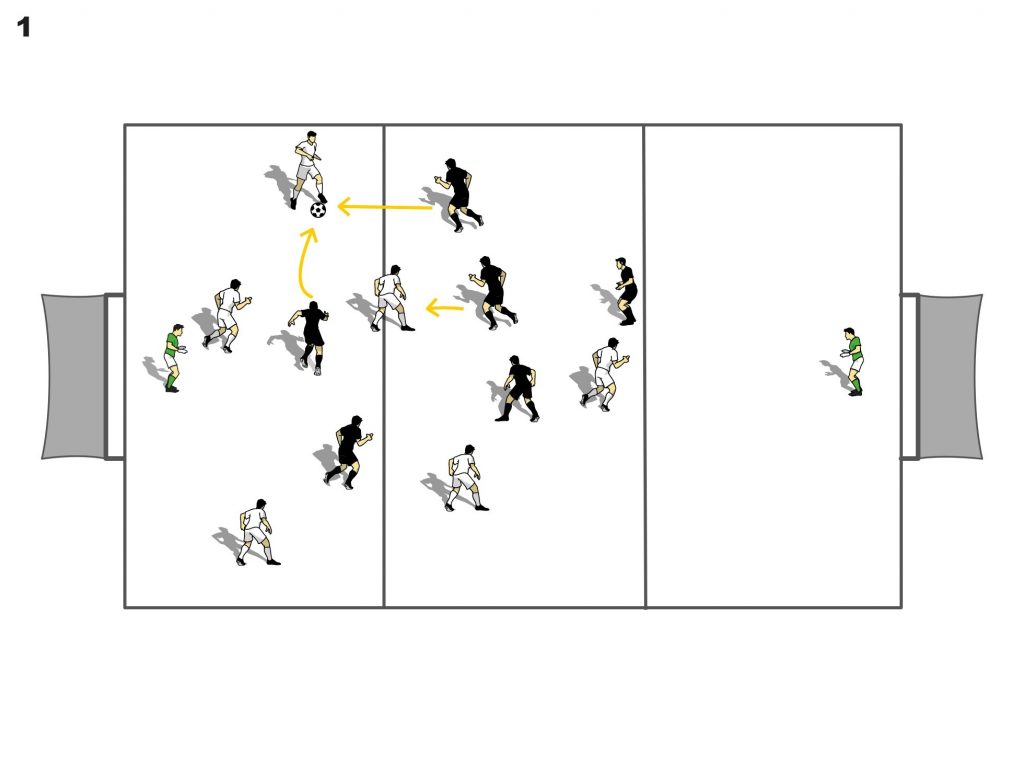
CHALLENGES / QUESTIONS FOR PLAYERS:
- Can you be defensively positive by pressing high up the pitch?
- If the front players are pressing, ensure the rest of the team is defending high up the pitch. This stops the opposition from breaking the first area of pressure, and then being able to attack free spaces between the front and back players.
- Ensure the goalkeeper is alive to the play, concentrating fully, and has a high starting position to sweep up any passes played behind the defence. This is a very important aspect of a high pressing game.
- Once the ball is regained, can the team attack quickly to take advantage of their close proximity to goal, and the potential disorganization of the opposition?
SCORING:
Goals scored. Double points if a goal comes from a regain in the opponent’s half, or in the final third (Progressions).
CAUTION:
As a result of the value of a goal
from a regain, players may
intentionally give the ball away, so they can press and win it back! This can and
does happen at the very highest level of the professional game, but very
irregularly. Ensure rules and soccer logic are not bent too much!

